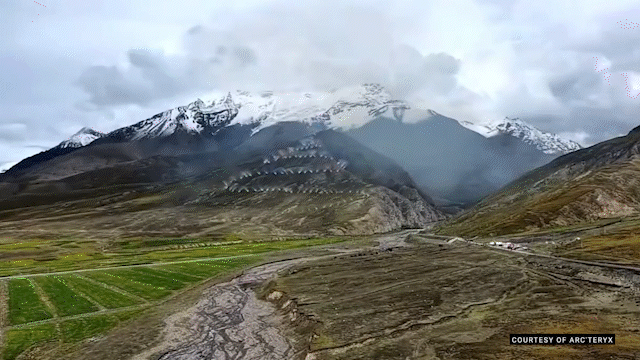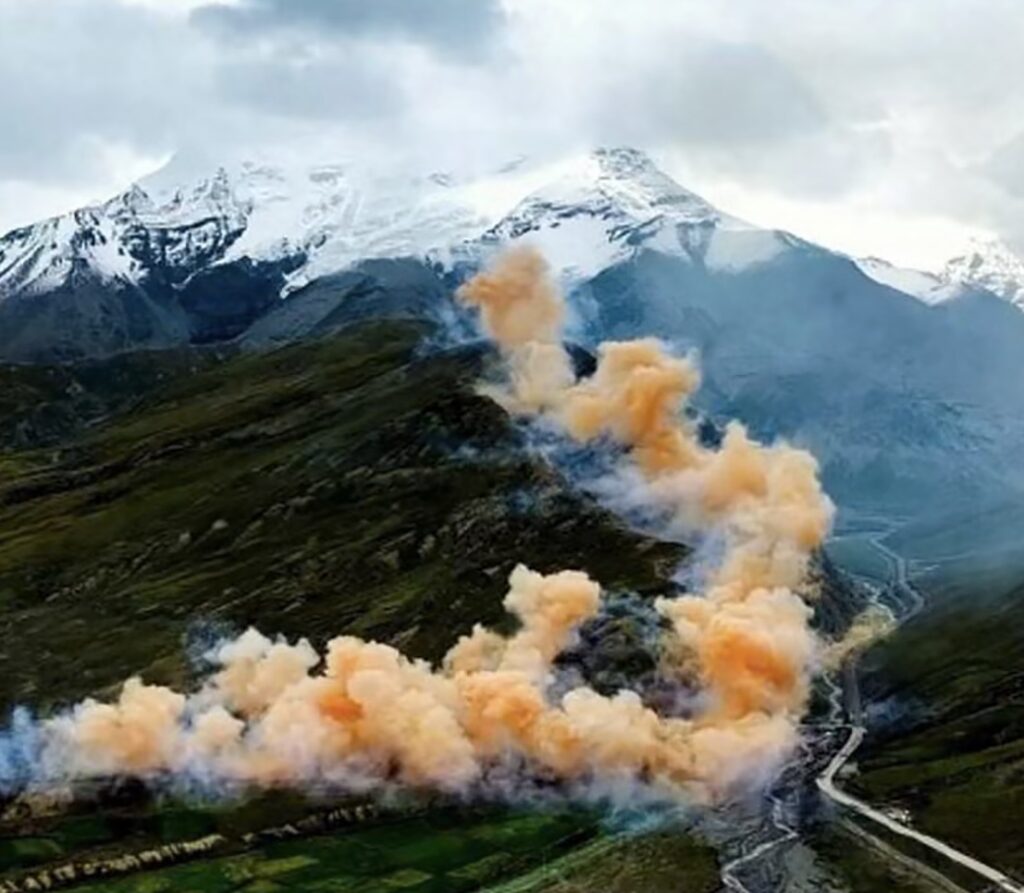Arc’teryx, the Canadian outdoor clothing brand famed for its high-performance alpine gear, had formed union with celebrated artist Cai Guo-Qiang on a spectacular pyrotechnic display in Tibet’s Shigatse region. The event unfolded across a ridgeline of the Himalayas, where multi-coloured fireworks and smoke trails mapped out the form of a dragon ascending into the sky. Branded as a blended muse of art and outdoor culture, the spectacle was designed to link Arc’teryx’s identity to mountain landscapes and to position the brand at the intersection of innovation, nature, and culture.
Organizers stressed that the materials were biodegradable and that animals had been moved away from the site beforehand. They further claimed that the display complied with pollution standards similar to those in place for international events such as the Beijing Winter Olympics. Yet, despite these assurances, the visual impact of the event—smoke plumes curling along sacred ridges—immediately struck many as discordant.
Why It Sparked Vestige Remarks
The reaction was swift and severe. Environmental advocates and outdoor enthusiasts argued that fireworks, regardless of whether they use biodegradable components, release smoke, particulate matter, and chemical residues into delicate alpine ecosystems. In high-altitude regions, ecological recovery is slow, making even minor disturbances potentially long-lasting.
Equally charged were cultural sensitivities. For many Tibetans, the mountains are sacred. Critics described the dragon imagery—a potent symbol in Chinese culture—etched across a Tibetan ridgeline as a gesture that ignored or overshadowed local traditions. What was intended as a celebration of mountain spirit was instead widely perceived as a corporate spectacle staged upon sacred land.
The brand’s marketing identity amplified the sense of betrayal. Arc’teryx has long presented itself as an environmentally conscious company committed to preservation and respect for nature. Consumers accustomed to this ethos interpreted the stunt as hypocritical. Social media in China and abroad filled with accusations of “greenwashing” and “selling out the mountains.”
Arc’teryx’s Apology & Response
By September 22, 2025, Arc’teryx issued public apologies in both English and Chinese. The company admitted that the event “was out of line with Arc’teryx’s values” and acknowledged that the execution had “deviated and even diverged” from original intentions. In effect, they conceded that what had been envisioned as an homage to nature and culture became an environmental flashpoint that undermined their core message.
The English statement emphasised the misalignment with company values, while the Chinese apology focused more on regrets and the promise of review. This difference in tone drew further commentary, but the essential point was clear: the brand recognised the damage done.
Artist Cai Guo-Qiang also apologised, admitting oversights in planning and pledging to support any remedial work if harm were confirmed. Arc’teryx committed to cooperate fully with the authorities and to bring in a professional third-party environmental organisation to investigate potential impacts.
Several unresolved issues continue to shape the controversy:
-
Environmental assurances. While organisers described the fireworks as biodegradable, sceptics argue that combustion inevitably leaves smoke and particulates, which in a fragile ecosystem may take years to dissipate. Independent testing will be needed to clarify whether residues remain in soil or water.
-
Wildlife disruption. Though livestock were relocated and salt blocks were used to guide wild animals away, questions remain about the adequacy of these measures. Sudden noise and light can traumatise animals or alter migratory patterns, effects that may not be visible immediately.
-
Cultural respect. Beyond measurable pollution, many Tibetans and their advocates stress that staging a dragon—a Chinese cultural emblem—on sacred mountains symbolises erasure rather than celebration. The event has reignited long-standing debates about cultural sensitivity and corporate behaviour in politically charged regions.
-
Brand alignment. At stake is whether Arc’teryx can credibly continue to claim environmental stewardship. For critics, apologies are insufficient without structural changes that ensure future campaigns align with ecological and cultural ethics.
Stressors
For Arc’teryx, the path to rebuilding credibility involves more than apologising. Analysts expect the brand to announce reforms in how it vets collaborations, particularly in ecologically vulnerable areas. Transparent environmental impact assessments, stronger consultation with local communities, and stricter internal review processes are likely to become mandatory.
The broader outdoor industry is watching. Brands have increasingly pursued bold artistic or cultural stunts to capture attention. This controversy demonstrates the risks: what may appear visually impressive can backfire if it clashes with environmental or cultural ethics. The lesson is clear—nature is not a marketing stage.
Government regulators may also respond with tighter rules on events in sacred or fragile geographies. This could include more rigorous environmental reviews and stricter penalties for companies that disregard ecological sensitivities.
Impression
Arc’teryx’s “dragon” fireworks display was intended as a union of art, culture, and outdoor identity. Instead, it ignited a debate about the ethics of spectacle in fragile landscapes. The immediate consequence was reputational damage and an official probe; the longer-term effects may include stricter industry standards and heightened public vigilance.
For Arc’teryx, the challenge now is to reconcile its image as a mountain guardian with the reality of this misstep. Consumers will look not only for words but for evidence of changed practices—whether in transparent investigations, remediation of any harm, or future campaigns that highlight stewardship rather than spectacle.
Ultimately, the incident underscores a universal truth: in places as sacred and fragile as the Himalayas, even the most dazzling spectacle can look like desecration. To regain trust, Arc’teryx must prove that it values the mountains not as a backdrop for marketing, but as landscapes to be honoured and protected.
No comments yet.










